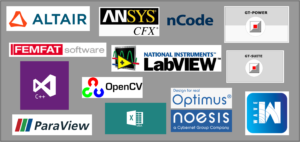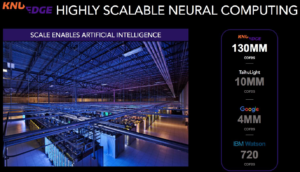Analysis Tools
The Challenge
The value of engineering analysis is generally acknowledged and rarely in question anymore. Even for start-ups, there is great benefit in testing an idea ‘virtually’ before committing to costly hardware implementations and laboratory testing. However, the primary challenge for start-ups and early- stage companies is the typical software licensing model. Commercial analysis software often involves expensive 12-month lease terms making the use of such software only attainable for fully funded companies. In fact, we would contend that the lack of access to problem-specific analysis software early enough in the product life cycle is one of the most problematic issues for tech start-up companies today.
Our Approach
If the customer does not already own and/or lease analysis software, we first determine the required feature set of the analysis software that allows us to fully analyze the customer’s problem. There can be significant differences in software cost based on how the required features are spread across modules and licenses. We then solicit quotes from our contacts at various software companies and decide jointly with the customer which software would be most appropriate. Sometimes we are able to negotiate shorter lease terms as well.
Our Experience
Naturally, we have used quite a few engineering analysis software packages and do have our favorites for certain classes of problems. But it has happened more than once that we had to start from scratch with a “new-to-us” software package, yet were able to complete the project successfully and on time. You might wonder how this is possible given the complexity of many of today’s software offerings?
The answer consists of three parts (another ‘triad’):
- In-depth knowledge of the underlying physics
- In-depth knowledge of numerical methods
- Sufficiently strong commonality between user interfaces
And here is the list of software packageswe have successfully used for completing projects, some of which were long-term, multi-year projects:

- Structural Analysis and CFD: Ansys, Altair
- Fatigue: FemFAT, NCode
- Systems Analysis: GT-Power, GT-Suite, Ricardo WAVE
- Optimization: GT-Power, Optimus/Noesis
- Programming: Visual C++, VBA, LabView, Matlab
- Open-Source: ParaView, ImageJ
Sample Project: Thermal analysis of HPC Computing Enclosure

- Background: A high-performance computing system based on neural network processors has been developed to specifically address the requirements for AI applications.
Role of NSES: Thermal analysis and cooling of rack-mounted system using Altair CFD software; detailed component-level modeling of convective cooling using conjugate heat transfer led to flow-optimizations for improved cooling efficiency; experimental validation of air flow in sub-system.
Presentation at Altair User Conference 2017: Prepared and presented high-level summary of thermal analysis results.
